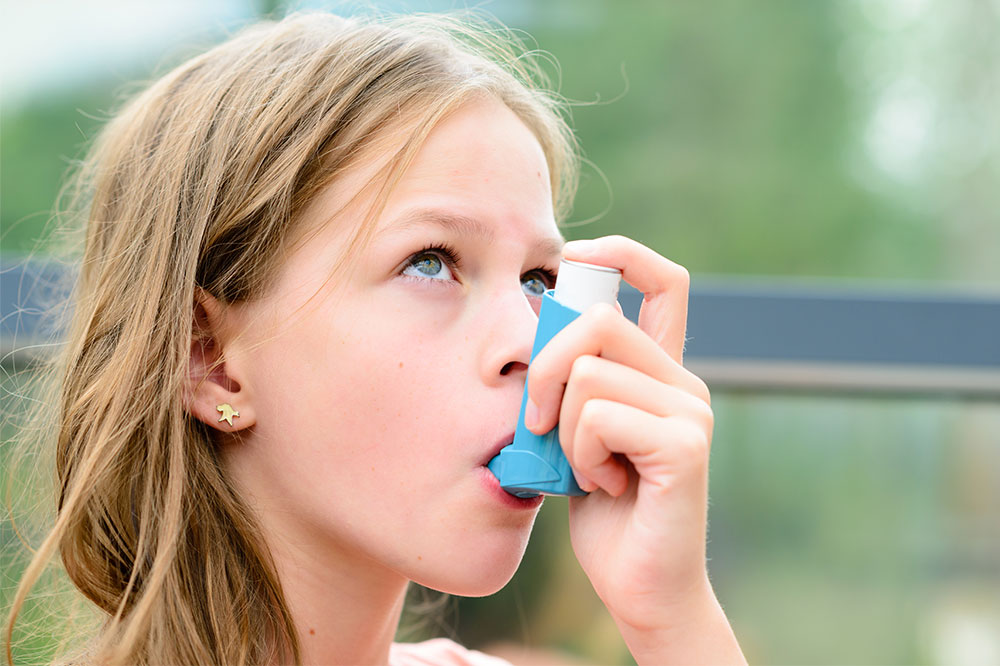
Asthma in children – Causal factors, risks, signs, and more
Asthma is a chronic respiratory disease that causes swelling around the lining of the airways, tightening of lung tissue and triggers the production of thick mucus. These failures trigger breathlessness, cause chest pain, and affect overall lung function. Children can develop asthma early on with mild to moderate discomforts in the initial stages that progress if left unchecked. Childhood asthma should be promptly treated and managed to prevent further complications.
Causes and risk factors
Allergies
Allergies can be passed down from generation to generation as a mutation in the genetic code. In fact, children with one or both parents suffering from a history of asthma are more likely to be affected. Skin allergies, food allergies, and even hay fever are some of the precursors that trigger asthma.
Underlying respiratory problems
Inflammation of the sinuses, chronic stuffy or runny nose, and common viral infections that persist increase the risk of childhood asthma. These conditions present discomforts that cripple the respiratory system.
External exposure
One of the biggest causes and risk factors is linked to external pollutants living in an urban setting. For example, extreme changes in weather conditions going from hot to cold climates, exposure to fumes, particulate matter, and industrial pollution increase the chances of getting asthma.
Signs and symptoms
- Cough
Developing a daytime or nighttime chronic cough that doesn’t subside is one of the first signs of asthma. These discomforts may flare up frequently or persist. - Wheezing
Letting out a whistling sound while taking deep breaths is indicative of wheezing caused by blockages in the nasal cavity. These whistling sounds may get louder as the condition progresses. - Breathlessness
Shortness of breath is another evident sign of asthma as little children struggle to breathe normally or gasp for air after doing any strenuous physical activity that leaves them out of breath. - Chest tightness and pain
Pain in the chest can also develop alongside breathing difficulties indicating the lungs are struggling to keep up with the function of the respiratory system. Children might also complain of persistent tightness. - Diagnosis and treatment
Asthma, if detected early, can be easily managed to improve quality of life. Though there is no permanent cure, it is still possible to prevent complications from flaring up.
Tests for asthma
For very young children, doctors suggest spirometry tests to understand lung function. It’s a device used to check if the lungs can absorb oxygen and expel carbon dioxide efficiently. In addition to this, a peak flow monitoring device is used to measure the airflow from the lungs. Fluctuations in these readings indicate lung problems. Imaging tests like taking a chest X-Ray further help assess if the organ is showing signs of damage in the lung tissue.
Treatment options
Asthma can be treated to prevent flare-ups from causing problems daily.
- Prescriptions
For mild to moderate asthma symptoms, pulmonologists will prescribe a combination of corticosteroids, certain modifiers, beta2-agonists, and biologics. The dosage will vary depending on the severity of the symptoms. These prescriptions can be given orally or in the form of an inhalant. Inhalers are effective for quick relief, whereas controllers like biologics and corticosteroids are effective in managing some of the chronic symptoms. - Preventive care
Prevention is one of the better ways to manage asthma flare-ups apart from treatments. Limiting exposure to pollutants, monitoring chronic allergies, encouraging healthy physical activity to improve lung function, and regularly following up with the specialist can all help prevent asthma flare-ups.




